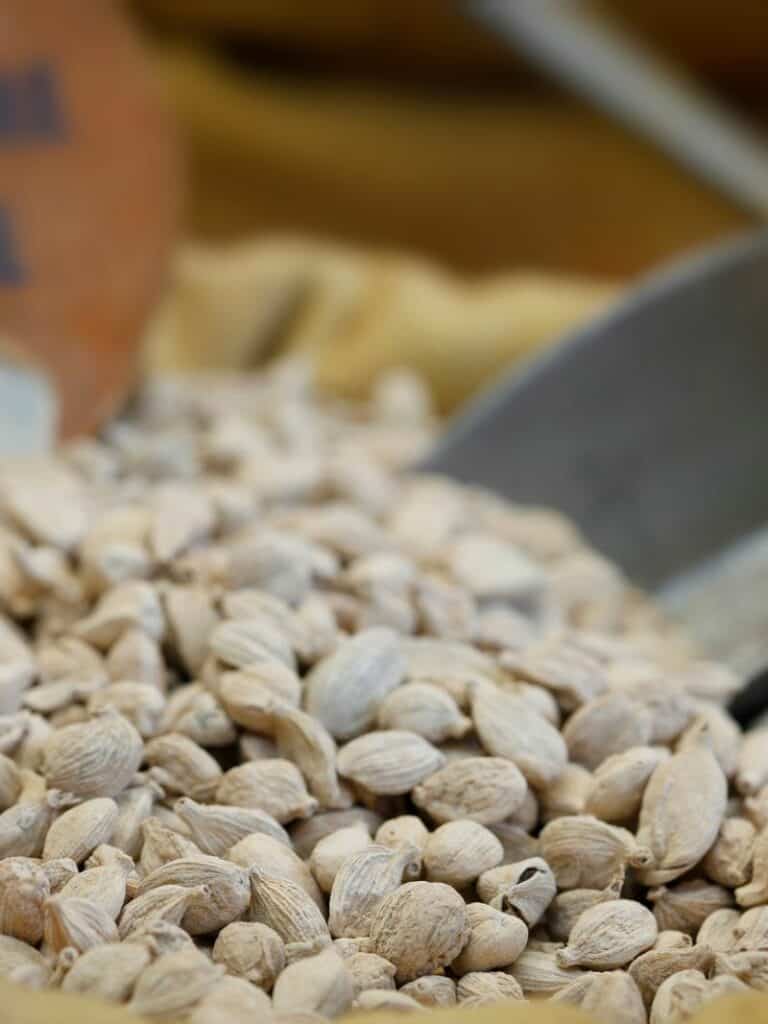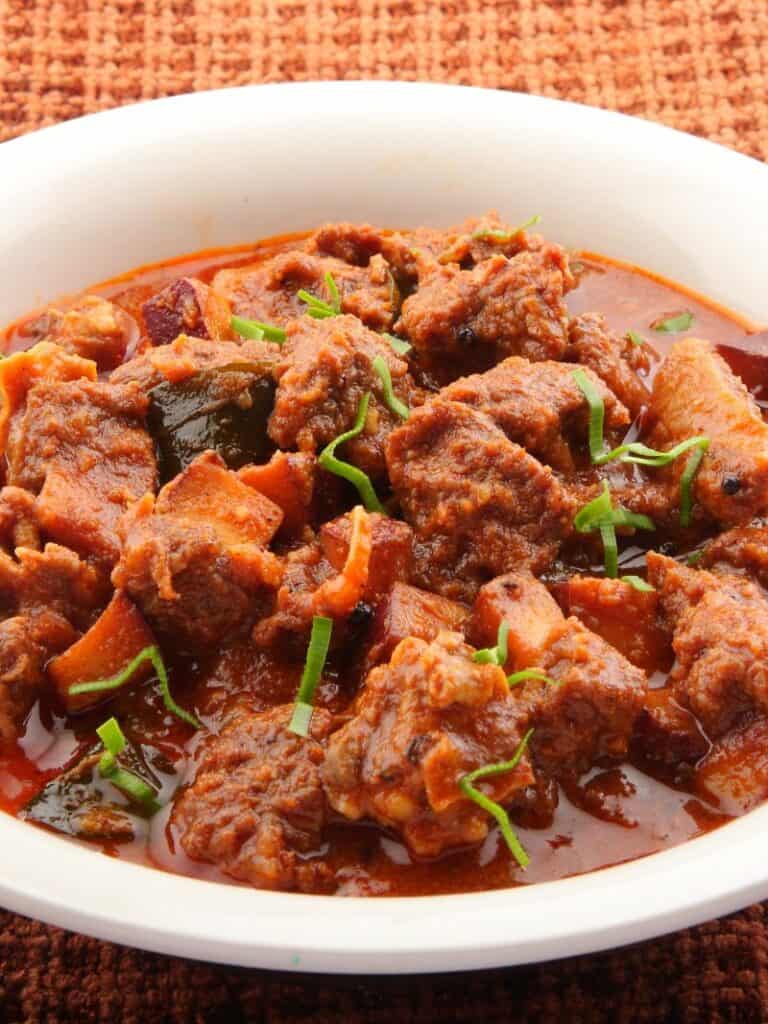Are you looking to bring an exotic twist to your favorite dishes? Look no further than the beautiful world of cardamom!
This unique
Whether a beginner or an experienced chef, our Ultimate Guide to Cardamom will teach you all the basics.
Our guide covers everything related to this popular
Dig into various healing properties and explore its use as a seasoning in various cuisines.
Try out enticing recipes featuring cardamoms like biryani or mango lassi! We’ve also included some creative substitutes if cardamom isn’t available in your area- no longer need to worry!
So don’t hesitate and join us on this exciting journey as we learn all there is about traditional yet modernly revered cardamom!
What Is Cardamom And Why Is It A Popular Spice ?
Do you know about cardamom? It might be one of the most underrated spices in the culinary world, but its intense and unique flavor and fragrance give it a deserved special place in many cuisines.
Cardamom is part of the same family as ginger, nutmeg, and turmeric, making it a powerful antioxidant when added to your dishes.
From Indian cuisine to desserts like pies and cakes, cardamom can be an essential ingredient.
But did you know that cardamom has medicinal properties that help treat digestive problems?
That’s why it is often used to soothe an upset stomach and aid digestion. In some countries, it is chewed after meals for its health benefits- anti-inflammatory properties and even freshening breath!
Cardamom can be found in pods, essential oil, powder, or supplements. Truly a versatile
History And Cultivation
Cardamom, sometimes called cardamon, is a
These plants are native to the Indian subcontinent and Indonesia and produce small triangular-shaped seed pods with a thin, papery outer shell and tiny, black seeds inside.
The seeds are known for their warm, slightly pungent, and fragrant flavor with hints of camphor.
Cardamom is called the “queen of spices” because of its diverse uses in sweet and savory dishes.
It is a perennial herbaceous plant that has to be appropriately grown to thrive. The ideal environmental conditions for cardamom cultivation require 150-600 cm rainfall, a 600-1600 m altitude range, and a temperature range between 50-100°f.
The soil should be full of moisture and well-drained; mulching is highly recommended for successful cultivation.
Sowing the seeds is essential for growing cardamom because these hard seeds take four months to germinate.
Types Of Cardamom
There are two types of cardamom – green and black.

Green cardamom is the most popular, for it’s the finest and most fragrant of her partners.
When added to dishes, it delivers a sweet, spicy, and zesty fruit flavor that adds complexity to its aroma.

In comparison, black cardamom has a solid, intense aroma and a sweet, pungent, minty, and menthol-like flavor.
Both types play a significant role in cooking and baking worldwide!
Green cardamom has been used in traditional Eastern dishes for centuries due to its incredible flavor.
It is commonly found in desserts like Indian rice pudding (Kheer), coffee drinks (Gahwa), garam masala spiced meat dishes (Biryanis), lentil soups (Dhals), curries (Curry Chatai), herbal teas (Herbal Chai) & much more!
On the other hand, black cardamom is predominantly used in savory dishes from around Asia, such as stir-fries (Manchu Prawns) and pastes (Ginger Ginger paste).

In addition to green and black cardamom, there is also a third type called white cardamom, which is green cardamom that has been bleached.
However, white cardamom is not as widely used as green and black cardamom and is primarily used in Scandinavian cuisine.
What Is Cardamom Powder?
Cardamom powder is a
Cardamom powder is often used in Indian, Middle Eastern, and Scandinavian cuisine and can be used in sweet and savory dishes.
The pods are typically first toasted to make cardamom powder to bring out their flavor and aroma.
The seeds are removed from the pods and ground into a fine powder. Cardamom powder can be used as a substitute for whole cardamom pods in recipes and is often used in desserts, such as cakes, cookies, and pastries, as well as in savory dishes like curries and stews.
Culinary Uses: How Is Cardamom Used In Cooking And Baking, And What Types Of Dishes Is It Commonly Used In?
If you love adding sweet and savory notes to your dishes, you should give cardamom a try!
This
Not only does it smell amazing, but it also has a roster of culinary uses that make it one of the most versatile spices in your kitchen.
It’s important to remember that cardamom can quickly overpower other ingredients, so always start slow.
You can begin by adding it to Indian
Those looking for something special can take their cooking skills up with a julekaka (a Swedish Christmas bread) or pulla (a braided Finnish bread).
Because cardamom is often used in aromatic curries, baked goods, and mulled beverages with other spices such as allspice, cinnamon, nutmeg, and clove, these are likely the best substitutes if you don’t have green cardamom on hand.
Cardamom is a versatile
Here are some popular tasty dishes that feature cardamom:
Biryani

Biryani is a popular Indian rice dish that typically includes a range of spices, including cardamom.
Combining cardamom, cinnamon, and cloves give the dish a complex, savory flavor.
Lamb Curry

Lamb curry is another popular Indian dish that features cardamom. The
Lentil Soup

Cardamom can also be used in savory soups, such as lentil soup. The
Moroccan Tagine

Moroccan tagine is a slow-cooked stew with various spices, including cardamom. The
Meatballs
Cardamom can also be used in savory meat dishes, such as meatballs. The
What Are The Health Benefits Of Cardamom?
Cardamon is a
Cardamom is rich in powerful phytonutrients, especially manganese – a trace mineral that helps the body create connective tissue, bones, and hormones.
Additionally, according to traditional medicine and modern studies, cardamom has many beneficial features, such as antimicrobial properties, and may fight infections.
Besides its medicinal properties, cardamom can flavor innumerable dishes ranging from tea and coffee to curries.
No wonder it’s one of the most commonly used spices worldwide! Cardamom essential oil is renowned for its therapeutic properties and various applications in traditional medicines.
As you can see, cardamom is a great
Tips For Buying And Storing Cardamom
When purchasing cardamom, there are a few things you should pay attention to. If you get cardamom in compacted pod form, the outer layer of it should be light green and shiny – if it’s dull or browning, it means that it’s old and has lost some of its flavors.
The freshest ground cardamom will look slightly yellowish-green. The aroma should be strong and even intoxicating when it’s fresh!
Remember that the strong aroma like anise is also probably due to added oils for preservation – these don’t contribute any taste or benefit when cooking with an already-ground cardamom powder.
As for storing the whole pods or pre-ground powder, keep them sealed in an opaque container away from direct sunlight for up to three months.
In terms of what to make with cardamom, Indian cuisine uses it quite often – from adding it garam masala to flavoring rice dishes like biryani or kheer (rice pudding).
Suppose you like adding a delicious smoky flavor without using smoke equipment.
In that case, grilling tea leaves with onions on open flames along with crushed cardamom (and other spices) can really make anything seasoned extraordinary!
Where to Buy Cardamom?
Cardamom can be found in most grocery, health, and specialty food stores. You can also purchase it online through various retailers specializing in spices and herbs.
When shopping for cardamom, look for high-quality whole pods or ground
Some stores may also carry different types of cardamom, such as green or black.
If you have trouble finding cardamom locally, online retailers are a great option to consider.
Of all the world's spices, black cardamom is perhaps the most difficult to describe.
This podded seed is unique and flowery yet earthy, robust yet delicate.
Pungent black cardamom has been smoke-dried, making it better suited to braised meats and savory recipes than green cardamom pods.
Cardamom Substitutes
If you don’t have cardamom on hand or simply want to try something different, there are several substitutes that you can use to achieve a similar flavor in your dish.
Here are some of the best cardamom substitutes:
Cinnamon
Cinnamon is a sweet and warm
Allspice
Allspice is another
Nutmeg
Nutmeg has a slightly sweet and nutty flavor that can be used as a substitute for cardamom.
It pairs well with many different flavors and can work in sweet and savory dishes.
Ginger
Ginger has a warm and slightly spicy flavor that can be used as a substitute for cardamom.
While it doesn’t offer the same floral notes as cardamom, it can add a unique and interesting flavor to your dish.
Cloves
Cloves have a strong and warm flavor with hints of sweetness that can be used as a substitute for cardamom.
They work well in many savory dishes and add depth and complexity to your cooking.







